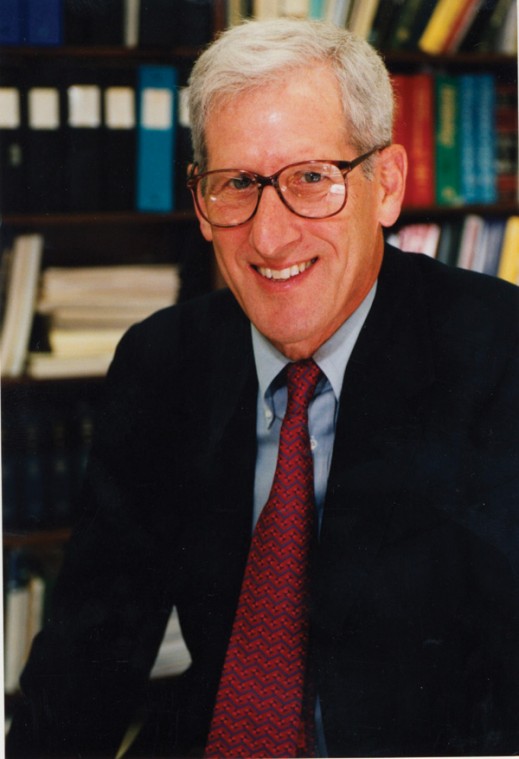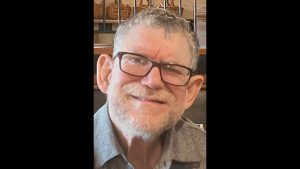Medical researcher is happiest in the lab
Published June 17, 2010
Early in his career, Stuart A. Kornfeld was interested in working out the structure of sugar chains on cell surfaces and learning how those sugar chains become attached to proteins. He worked closely with his wife, Rosalind Kornfeld, professor emerita of biochemistry in medicine at Washington University who died in 2007. Since their early work, this area of research has grown tremendously, and scientists now know that sugar chains are involved in all sorts of functions, including in the immune system and in the function of hormones.
More recently, Kornfeld has discovered how lysosomal enzymes are routed from where they are produced to where they are needed in lysosomes, which help rid cells of bacteria and viruses. That work led to his receiving the 2010 George M. Kober Medal from the Association of American Physicians in April, one of the highest awards in academic medicine. The award is named for Dr. George Kober, a pioneer in public health reform in the late 1800s and early 1900s. Former honorees include 1944 Nobel Prize winner Dr. Herbert S. Gasser, Dr. W. Barry Wood Jr., and Dr. David M. Kipnis.
A native St. Louisan, Kornfeld headed for Dartmouth College after graduating from Ladue Horton Watkins High School. He returned to St. Louis to earn a medical degree from Washington University School of Medicine in 1962. After completing postgraduate training at Barnes Hospital and at the National Institutes of Health, he started work at Washington University as an instructor in medicine. Kornfeld is a member of the National Academy of Sciences, the Institute of Medicine and the American Academy of Arts and Sciences.
ADVERTISEMENT
Kornfeld made time recently to talk about his work.
What are lysosomes?
Lysosomes are essential organelles, the garbage disposals of the cell. Lysosomes contain 60 different proteins that degrade materials that are taken up through the blood. If any one of these proteins is missing, disease is the result.
What sort of disease?
Tay-Sachs disease-which is common in the Jewish population-or Gaucher disease are examples. These are disorders where a single lysosomal enzyme is defective. That means that the material that the enzyme normally breaks down accumulates in the lysosome. As more material accumulates, there is more damage to the cells.
How are the two diseases different?
In Tay-Sachs, the accumulated material leads to neurological problems. In Gaucher disease, the spleen and the bone marrow are affected.
What led to an interest in this work?
ADVERTISEMENT
I am interested in how cells make lysosomes – in particular, how the 60 different proteins get made in one part of the cell and then delivered accurately and efficiently to the lysosome, where they function. It’s a complicated process, but one that is vital for the survival of the cell.
How so?
It involves putting a tag – like a Zip Code-on each protein. That tag is then recognized by the transport machinery, which takes the enzyme to the lysosome and dumps them off there. A key feature of each tag is a specific sugar, called mannose. These mannoses get a phosphate residue on them, and that makes the tags specific.
And what have you discovered?
We worked out how the 60 enzymes are recognized and tagged and also what the machinery is that recognizes the tags, packages them and delivers them. There are some rare forms of lysosomes where the tags can’t be put on, and the enzymes are not delivered, but secreted instead into the blood stream. That leads to I-cell disease, which affects some children.
What progress is being made regarding that disease?
We now have mouse models of I-Cell disease, mice with the same enzyme defect as patients, and we are studying how the various organs are affected over time. Having mouse models is very important to study the evolution of the disease manifestation – this is very exciting, and allows us to do a lot we could not otherwise be doing.
What are you learning?
We have had new insights into the lysosomes and the different tissues – and that will keep us busy in the future.
Stuart A. Kornfeld, M.D.
WORK: Hematology specialist at Barnes-Jewish Hospital; Washington University professor of medicine, biochemistry and molecular biophysics; co-director of Physician Scientist Training Program at Washington University School of Medicine
HOME: Frontenac
FAMILY: Three grown children (Kathy Kornfeld, Kerry Kornfeld and Carolyn Lesorogol), six grandchildren
HOBBIES: Theater, symphony, yard work
PERSONAL ACCOMPLISHMENT: Recently received the 2010 George M. Kober Medal from the Association of American PhysiciansAsked about his hobbies, Dr. Stuart A. Kornfeld responds that what he likes to do best is medical research. Good thing – because that’s his day job. Kornfeld, 73, has been receiving awards for his work since 1959, and it’s clear that the work itself is what has always mattered most to him.
















